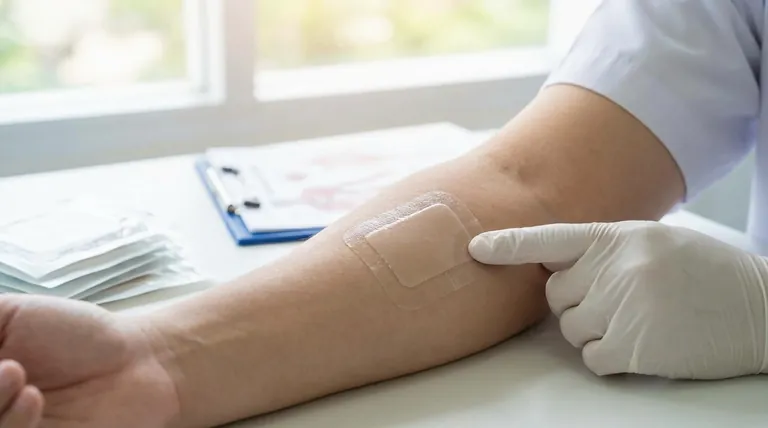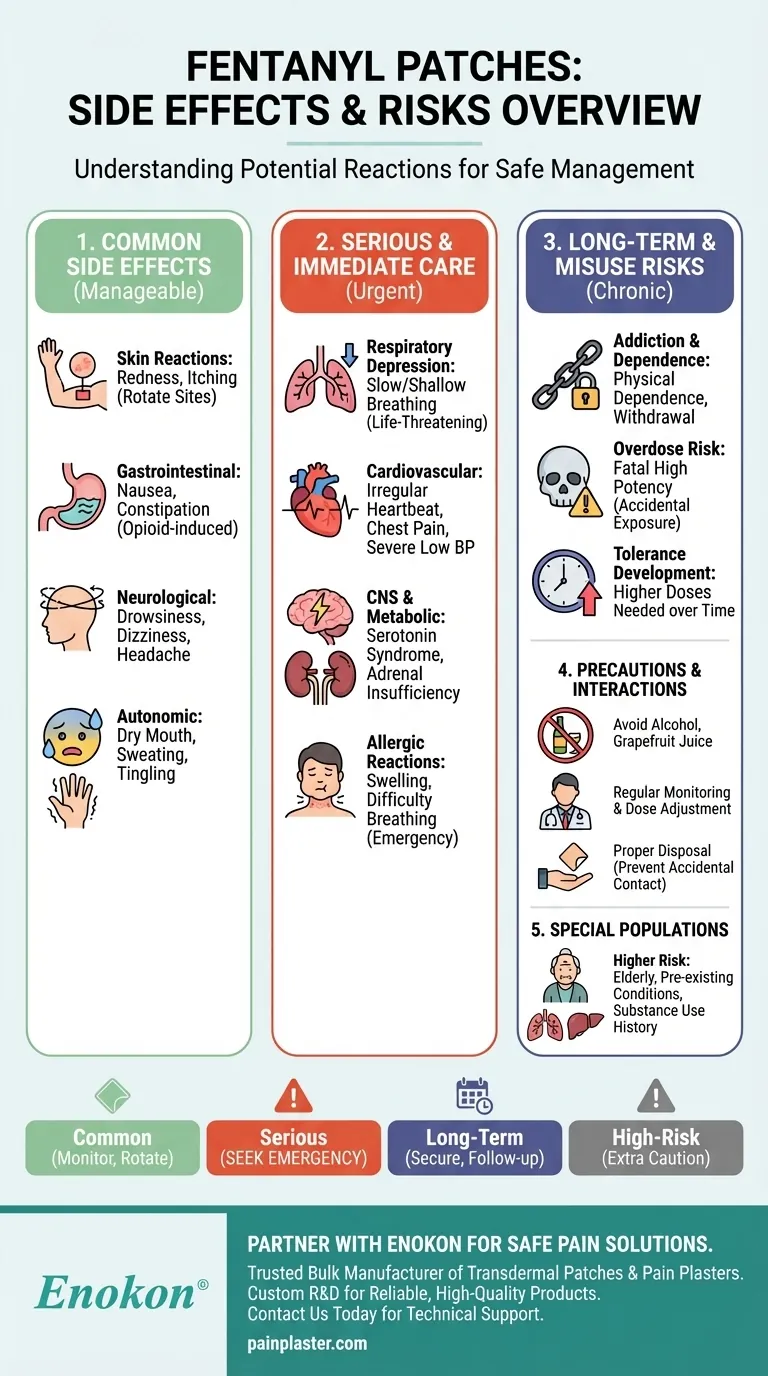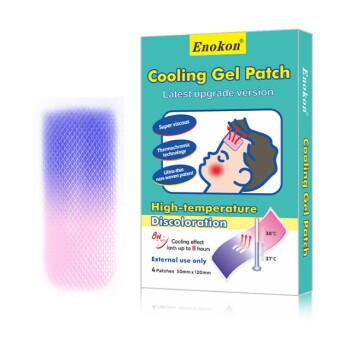Fentanyl patches are a potent opioid medication used for chronic pain management, but they come with a range of potential side effects, from mild to life-threatening. Common issues include skin irritation, nausea, and drowsiness, while severe risks involve respiratory depression, addiction, and fatal overdose. Understanding these effects is crucial for safe usage, especially given the drug's high potency and potential for misuse.

Key Points Explained:
1. Common Side Effects
- Skin Reactions: Redness, itching, or irritation at the Fentanyl Patch application site are frequent. These are usually mild but may require rotation of application sites.
- Gastrointestinal Issues: Nausea, vomiting, constipation, and stomach pain are common due to opioid-induced slowed digestion.
- Neurological Effects: Drowsiness, dizziness, headaches, and mood changes (e.g., confusion or lethargy) can impair daily activities.
- Autonomic Symptoms: Dry mouth, sweating, feeling cold, or tingling in extremities may occur.
2. Serious Side Effects Requiring Immediate Care
- Respiratory Depression: Slowed or shallow breathing is life-threatening, particularly in the first 24–72 hours of use or after dose increases.
- Cardiovascular Issues: Irregular heartbeat, chest pain, or severe hypotension (low blood pressure) may signal cardiovascular stress.
-
CNS and Metabolic Risks:
- Serotonin syndrome (shivering, fever, seizures) from drug interactions.
- Adrenal insufficiency (fatigue, weakness, low blood pressure) due to hormonal disruption.
- Allergic Reactions: Swelling, rash, or difficulty breathing necessitate emergency intervention.
3. Long-Term Risks and Misuse Potential
- Addiction and Dependence: Prolonged use can lead to physical dependence and withdrawal symptoms upon discontinuation.
- Overdose Risk: Accidental exposure (e.g., to children) or misuse (e.g., chewing patches) can be fatal due to fentanyl’s high potency.
- Tolerance Development: Over time, higher doses may be needed for the same pain relief, increasing side effect risks.
4. Precautions and Interactions
- Substance Interactions: Avoid alcohol, grapefruit juice, and tobacco, as they can amplify side effects or toxicity.
- Monitoring: Regular follow-ups with healthcare providers are essential to adjust doses and monitor for adverse effects like respiratory depression or mood changes.
- Application Safety: Proper disposal of used patches prevents accidental exposure to others.
5. Special Populations at Higher Risk
- Elderly patients or those with lung/kidney/liver conditions may experience intensified side effects.
- Individuals with a history of substance use disorder are at greater risk for misuse.
By recognizing these side effects early and adhering to medical guidance, patients and caregivers can mitigate risks while managing chronic pain effectively. Always consult a healthcare provider for personalized advice.
Summary Table:
| Side Effect Type | Examples | Action Required |
|---|---|---|
| Common | Skin irritation, nausea, drowsiness, constipation | Monitor symptoms; rotate patch sites; consult doctor if persistent |
| Serious (Seek Help) | Respiratory depression, chest pain, allergic reactions, serotonin syndrome | Seek emergency care immediately |
| Long-Term Risks | Addiction, tolerance, overdose potential | Regular medical follow-ups; secure storage; avoid misuse |
| High-Risk Groups | Elderly, lung/kidney/liver conditions, substance use history | Extra monitoring; adjusted dosing |
Need safe, effective pain management solutions? Partner with Enokon, a trusted bulk manufacturer of transdermal patches and pain plasters for healthcare distributors and brands. Our expertise in custom R&D ensures reliable, high-quality products tailored to your needs. Contact us today to discuss your requirements and benefit from our technical support!
Visual Guide

Related Products
- Icy Hot Menthol Medicine Pain Relief Patch
- Menthol Gel Pain Relief Patch
- Far Infrared Deep Heat Relief Patches Medicated Pain Relief Patches
- Asthma Cough and Pain Relief Patch for Adults and Kids
- Prostate Pain Kidney Health Care Patch for Men
People Also Ask
- How does menthol function as a topical analgesic? The Science Behind Cooling Pain Relief
- What are common side effects of menthol patch? Key Risks & Safety Tips
- What are the important warnings for using menthol topical? Safety Tips for Effective Pain Relief
- What are the pharmacokinetics of topical menthol application? Rapid Absorption & Short-Term Relief Explained
- Can cooling patches be used on newborns? Safe Fever Relief for Infants
















